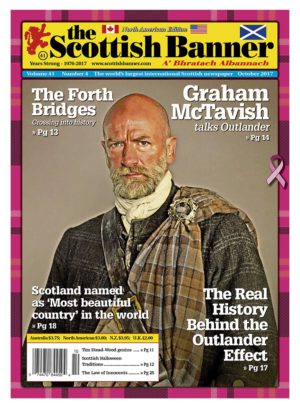
October 2017 (Vol. 41, Number 04)
The Banner Says…
A spooky kiss
This month many kids, big and small, will be donning costumes of witches, ghosts and just about anything else that could bump in the night. Most popular across North America this tradition in fact has its origins with our very own Celtic ancestors.
Samhain
Halloween is a shortened version of All Hallows Evening, which refers to the Christian festival of All Hallows’ Eve or All Saints’ Eve. The ancient pagan Celtic festival of Samhain (or Samhuinn in Gaelic), was held on the 1st of November, which marked the end of summer season and harvest period and the onset of winter ahead. The Celtic year was determined by the growing seasons and Samhain, considered one of the most important periods in the calendar, symbolised the boundary between the world of those living and the world of the dead. Many Celts believed on the night of October 31st, ghosts would walk again amongst them, and large bonfires were lit in each village to honour the dead and in order to ward off any evil spirits.
Spooky stories and tales
Today Scotland is still known for many spooky stories and tales. Edinburgh has been named the most paranormal city on earth and only just exceeds Glasgow in reported “ghostly events”, with both reporting hundreds of paranormal sightings or occurrences. I have been to Scotland and also had some unique stories to bring back with me. Whilst staying in a stately home which today is a hotel in the west of Scotland several people in our group came to breakfast asking who had a barking dog, staff quickly told us there in fact was no dog at the hotel, however it was a faithful dog who died twenty years previously and who lost his master many years ago before, and was reported to still bark for his owner.
On another visit I remember keeping my blinds open at night in a different hotel as it had such a brilliant view, I went to brush my teeth before bed and came out and the blinds had been lowered and thought- that’s odd… Later that night I awoke to a peck on the cheek and thought-that’s even odder! I felt very strange going to the desk the next day to request a room change and when I told them why the staff told me there was a motherly spirit that had been reported at the hotel over many years by several guests but she was lovely. I can’t say this was my best kiss ever but one I will never forget!
Last month the Scottish Banner expanded our social media reach and initiated an Instagram account. Many people had commented how much they enjoy our Facebook and Twitter images and that we should also use the photo based social media platform. So if you happen to also use this popular service please follow us and help us share our story and love for Scotland.
In this issue
Many people around the world should by now be able to breathe a bit easier as the hit television show Outlander has returned to our screens. The “Droughlander” has been fixed for the time being and this month we are so thrilled to have one of the shows most beloved actors taking part. Graham McTavish took the role of Dougal Mackenzie and made it his own and literally brought the character swinging out of the pages of Diana Gabaldon’s books to our screens.
Scotland recently named the most beautiful country in the world by travel gurus Rough Guides. This has made headlines around both Scotland and the world and we are so happy Scotland has been recognised in this way. Of course the Scottish Banner has been telling people this for over forty years and our readers know this already but this well-deserved accolade just reaffirms what we do each month and why.
Also big in the news recently was the opening of Scotland’s newest landmark, the Queensferry Crossing. This bridge looks to have many uses, first and foremost as a modern transport link for locals and visitors but also creating a “bridge tourism” effect with people looking to come to Scotland to see all the great bridges the nation has and some are described in this issue.
As mentioned this month is Halloween and we have a few of our favourite Scottish spooky places highlighted in this issue. Whether or not you believe in ghosts Scotland remains a fascinating country with a rich history and an incredible story to be told. This month millions of people will celebrate a tradition our Celtic ancestors created and passed on, this is a gift to the world.
If you happen to get a kiss in the night this month, I hope it is from someone lovely, even if they happen to be a ghost…
Have you had a spooky experience in Scotland? Share your story with us by email, post or at www.scottishbanner.com/contact-us
This month also marks Breast Cancer Awareness Month and includes our pink tartan cover, the Scottish Banner will be donating proceeds from this issue to help this great cause, and we thank our readers for their support.
Please share with us your views by email, post or at www.scottishbanner.com/contact-us




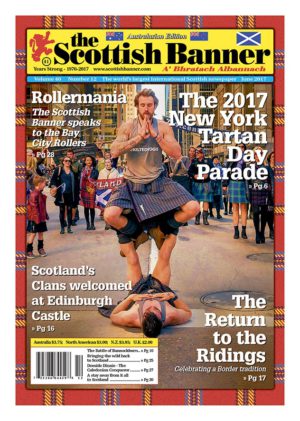

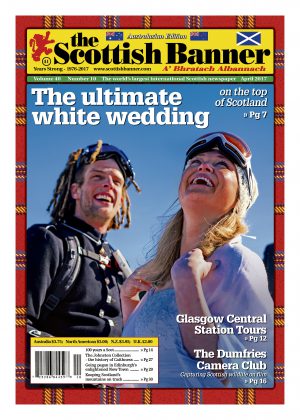

 February 2017 (Vol. 40, Number 08)
February 2017 (Vol. 40, Number 08)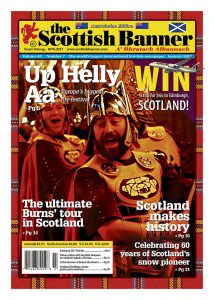 January 2017 (Vol. 40, Number 07)
January 2017 (Vol. 40, Number 07) December 2016 (Vol. 40, Number 06)
December 2016 (Vol. 40, Number 06) November 2016 (Vol. 40, Number 5)
November 2016 (Vol. 40, Number 5)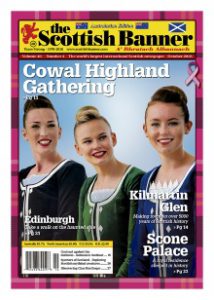 October 2016 (Vol. 40, Number 04)
October 2016 (Vol. 40, Number 04) September 2016 (Vol. 40, Number 03)
September 2016 (Vol. 40, Number 03)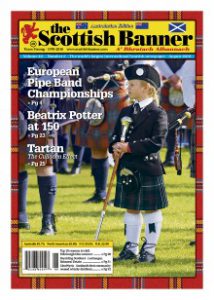 August 2016 (Vol. 40, Number 02)
August 2016 (Vol. 40, Number 02)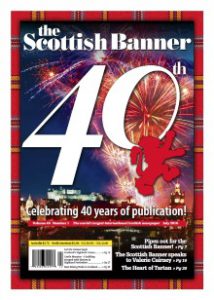 July 2016 (Vol. 40, Number 01)
July 2016 (Vol. 40, Number 01) June 2016 (Vol. 39, Number 12)
June 2016 (Vol. 39, Number 12) May 2016 (Vol. 39, Number 11)
May 2016 (Vol. 39, Number 11) April 2016 (Vol. 39, Number 10)
April 2016 (Vol. 39, Number 10)
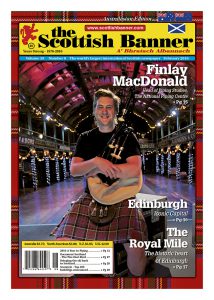 February 2016 (Vol. 39, Number 08)
February 2016 (Vol. 39, Number 08)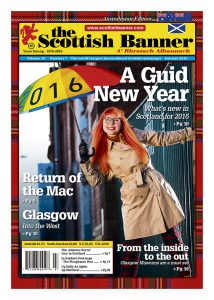 January 2016 (Vol. 39, Number 07)
January 2016 (Vol. 39, Number 07)